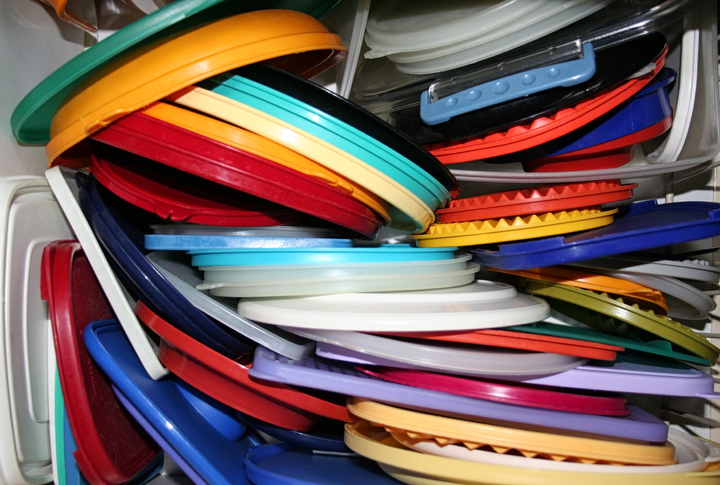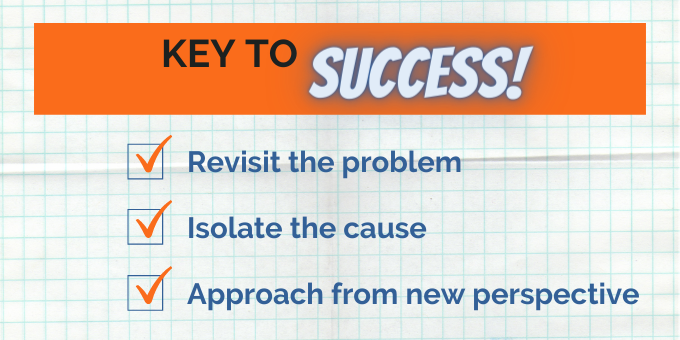If you want to create an effective strategy — marketing or otherwise — I’d like to have a word with you. One word and a definition, to be precise.
The word is elegant, and the definition we’ll use is not the one that focuses on style and appearance.
It’s this: A solution to a problem that is pleasingly ingenious and simple.
If your strategies aren’t elegant, they probably won’t fly. And a study in organizing Tupperware will prove my point.
The unorganized Tupperware drawer that was destroying my family
Tupperware, small plastic containers with interlocking lids and bottoms, is one of the great innovations of the Industrial Revolution. These containers solved a global crisis: How to efficiently store leftover lasagna.
Today, there are multitudes of Tupperware knock-offs, and glass containers are now the healthier and environmentally friendly alternative. But for the sake of this article, I’m going to refer to the containers as Tupperware.
Before our two kids flew the coop, the Mischio family was big on Tupperware. From small containers, perfect for homemade salad dressing, to behemoth monsters, ideal for the aforementioned lasagna, we relied heavily on Tupperware to keep the food supply intact.
The problem was storing them.

The container and lid storage conundrum
Tupperware is like a garden weed. You buy them and put them in a drawer, all nice and neat. Two months later, you’ll find a mutinous mess of container lids and bottoms.
Worse, besides the original set you bought, you’ll find stray sets that seem to follow you home after dinner parties with friends. And worse yet, there always seems to be an extra container or two missing the matching lid, a Tupperware abomination.
The law of compounding interest applies to Tupperware: They will grow exponentially.
Something had to give. Our Tupperware drawer was out of control. So I, being the primary organizer in the household and, yes, a bit of a neat freak, organized the mess. I stacked all the bottoms together, smaller units inside bigger ones, like a post-modern set of Russian dolls. The lids I stored vertically together, like a record collection.
That’s when all hell broke loose.
Training be damned: The system breaks down
After launching the Tupperware storage protocol and putting the family through a rigorous training session, I was dismayed to find the drawer in complete disarray two weeks later.
Rather than containers neatly fitted together, they were either stacked or shoe-horned in wherever possible. The lids were all over the place. Worst of all, to find the right size lid for a bottom, you had to pick through them, guessing at which were the right partners.
I would lie in bed awake at night, wondering what had gone wrong. And then one day, out of the blue, the elegant answer arrived.
Analyzing the misery
One Saturday afternoon, I decided it was time to solve the eternal Tupperware issue by coming at it from a whole new perspective. Here was the three-step process I used:

1. Define what is truly essential. It seemed like we only used about 5 or 6 containers. But by my count, there were currently 14,751 different pieces of mismatched Tupperware in the drawer.
2. Isolate the main cause of the problem. The biggest cause of disarray was the tops were separated from the bottoms, and it took forever to pair them.
3. Approach the solution from a different perspective. When I decided to only go with six containers, I carefully identified the most commonly used, and snapped the lids closed on their partner bottoms. When I looked at the six pieces, stacked on the counter, I realized that they could be stored in the cabinet, with lids atop the bottoms, with room to spare.
Voila! With the lids and bottoms together, nothing got lost, and anything that appeared orphaned was discarded. Problem solved!
The miracle works…and spreads
Normally, my organizational systems implode within the first two weeks, no matter how thorough my training sessions are with the family.
But this one held. My wife is the anti-Greg when it comes to organization (if you are repulsed by mess, DO NOT look at the interior of her car). Yet she agreed to the system, thought it was cool and made complete sense, and followed it with ease.
You might consider this a minor success, but here’s what made me realize it was truly one for the ages: Sharon, who nannies for a family, implemented the system at that household. And just like at our place, it works like a charm there.
The moral here? Control doesn’t work. Elegant systems do.
I’m reading a brilliant book called The Road Less Stupid by Keith Cunninghan. My elegant Tupperware drawer solution aligned with his observation:
“Growth and control work inversely. The more growth you desire, the less control you can have (and vice versa).”
Whether you’re a business owner or a marketer, if you’ve created a complex, convoluted system, and it’s difficult to follow without an instruction manual, then ditch it. Revisit the problem, define the essence of what you need, and approach it from a different perspective.
Elegance endures. I’ve got the organized Tupperware drawer to prove it.
Learn how to make a Digital Twin of your sales team. Download our complete Digital Twin Manufacturing Marketing Guide!

